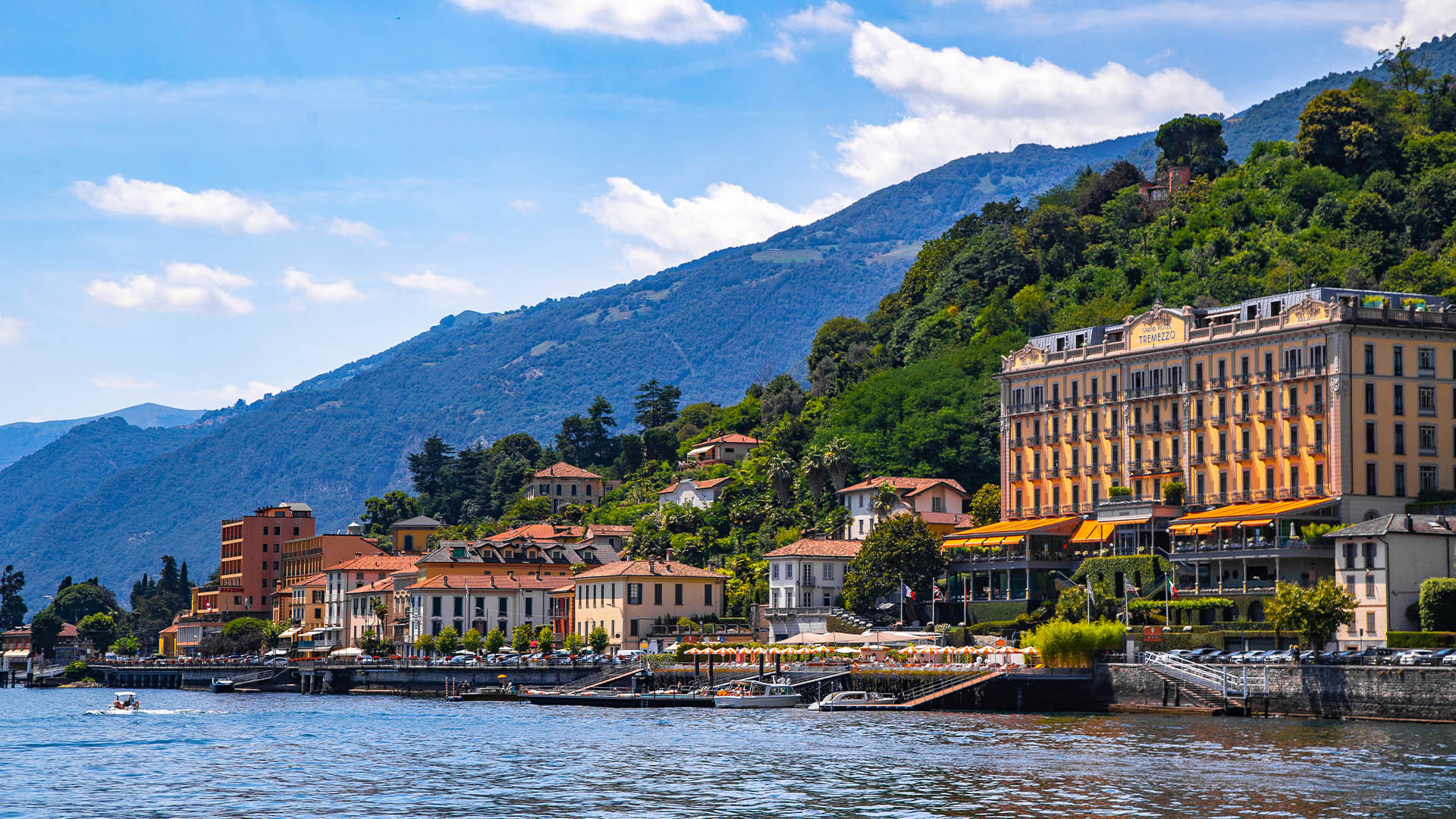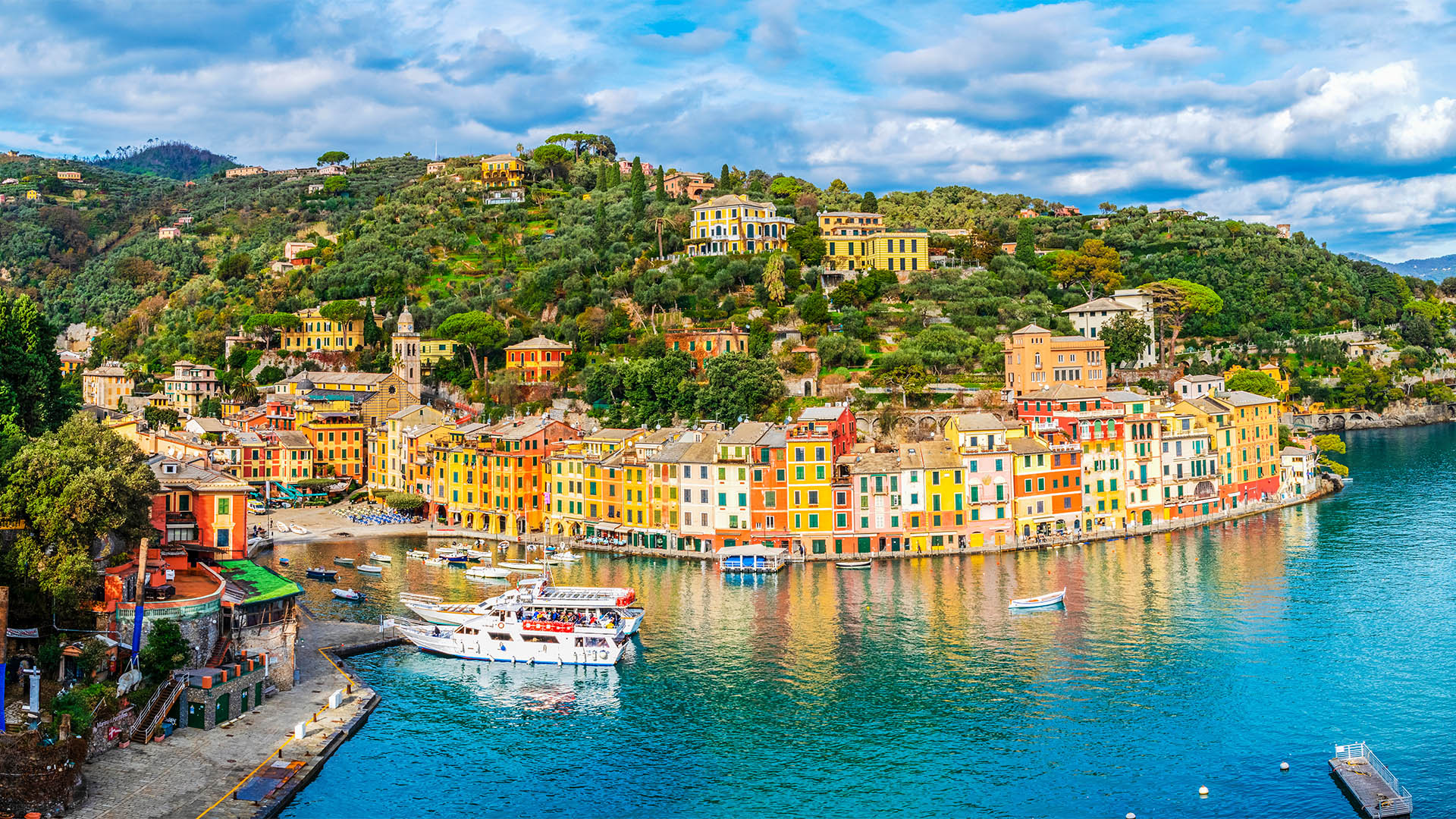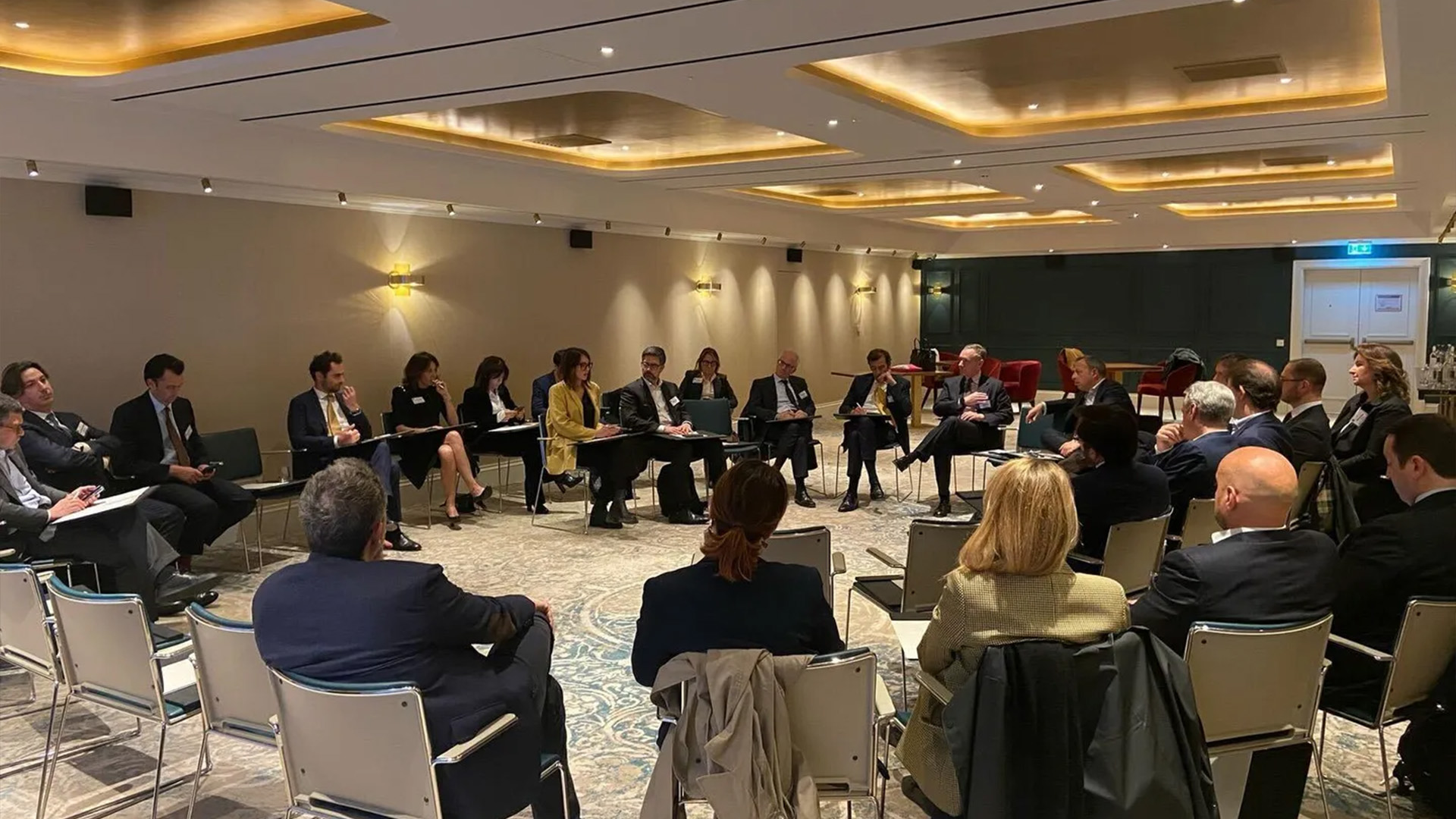 Credit: Adobe Stock
Credit: Adobe StockThe White Lotus Effect: Redefining Italy’s Luxury Hospitality Real Estate
Inside the strategies reshaping the Italian luxury hospitality sector and driving record investment in premium destinations
August 11, 2025Real Estate
Written by Jorge Aguinaga
Strongly driven by luxury assets in top tourist destinations, Italy’s hospitality sector achieved its best performance in five years in the first half of 2025, attracting EUR 1.5 billion in investments, up 88% from H1 2024, and accounting for four of the ten largest transactions of the period, according to Dils[1].
But as Italy’s luxury hospitality market evolves through a measured phase of consolidation, international repositioning, and growing investor sophistication, senior leaders from hotel groups, capital managers, and real estate funds gathered to assess the outlook, reflecting an industry seeking to balance premium pricing and expanding destinations with mounting cost pressures and geopolitical uncertainties.
One panelist cited data showing the average daily rate (ADR) for Italian hotels increased from EUR 145-150 in 2019 to EUR 225 in 2024, particularly in the top tier. However, further double-digit growth is no longer expected.
Operators and investors acknowledged that expectations need to be re-anchored. One participant noted that there is a tendency for those holding prime assets to assume the market will keep rising indefinitely. This consensus suggests the cycle is maturing, even as performance indicators remain strong.
The discussion also highlighted constraints from rising construction and land costs, with one investor observing value may be found in the final exit, but it’s a long, complicated path.

However, a note of caution was sounded due to a "paranoia effect" from continuing uncertainty over the impacts of US tariff implementation and potential recessionary signals. Booking windows are shortening and some American clientele are showing early signs of hesitancy.
In light of this situation, participants agreed on the need to further diversify target markets, with attention increasingly turning to the Middle East, Brazil, Mexico, and Australia.
Discussions highlighted the expanding potential of Italy’s lakes and coastal regions, noting that although Lake Como is increasingly considered to be “oversaturated and expensive,” destinations like Lake Garda, the Dolomites, and Puglia were positioned as rising stars. The Dolomites, in particular, are emerging as a year-round destination with growing summer occupancy.
American interest in Sicily has surged, partly influenced by the "White Lotus effect" following the region’s prominence in the immensely popular HBO television series. This has had the effect of enhancing brand awareness and even boosting demand in previously overlooked markets like Palermo.

Similarly, secondary urban centers like Naples and Bari were identified as new frontiers with low supply and clear demand. These markets are seen as opportunities to “create the destination,” especially when paired with a key gateway city.
To succeed in this environment, investors must adopt a portfolio approach, assembling multiple quality assets across destinations to create something that institutional investors can understand and buy. This strategy enhances liquidity and enables better risk management through diversification.
A key recommendation was to focus on "repair shops" - existing assets that can be repositioned or redeveloped with a clearer, faster business plan. This approach minimises the time between acquisition and exit and allows for upgrading structures with the right "skeleton" to luxury standards.
While value-add strategies targeting returns of 11-15% are seen as attractive, there is now an incredible demand for opportunistic funds that aim for returns of 20-25%. Surprisingly, some institutional investors are showing interest in these higher-risk ventures, challenging the notion that only family offices would engage in such projects.
While the global market has over 110,000 units across 750 branded residential projects, with another 750 in the pipeline by 2029, Italy, by contrast, possesses only a handful.

The appeal of this model is significant, with branded residences estimated to increase the sale price per square meter by an average that can reach up to 40%, as seen in a new development in Portugal where properties are pre-selling for EUR 20,000 per square meter before construction has even begun.
Most of these buyers are American, demonstrating that global trust in brand equity can offset construction risk and accelerate revenue generation. It's not just about selling a unit, but about offering the experience and the service infrastructure of a luxury hotel.
Participants argued that this model has the potential to create a win-win-win scenario for all parties involved:
[1] Real Estate Market H1 2025 in Italy - Dils
Strongly driven by luxury assets in top tourist destinations, Italy’s hospitality sector achieved its best performance in five years in the first half of 2025, attracting EUR 1.5 billion in investments, up 88% from H1 2024, and accounting for four of the ten largest transactions of the period, according to Dils[1].
But as Italy’s luxury hospitality market evolves through a measured phase of consolidation, international repositioning, and growing investor sophistication, senior leaders from hotel groups, capital managers, and real estate funds gathered to assess the outlook, reflecting an industry seeking to balance premium pricing and expanding destinations with mounting cost pressures and geopolitical uncertainties.
Stabilisation after Strong Growth
The central question among the top decision makers was whether valuations in Italy’s luxury hospitality market could continue to increase - but the general consensus is that the period of dramatic post-COVID growth has given way to stabilisation.One panelist cited data showing the average daily rate (ADR) for Italian hotels increased from EUR 145-150 in 2019 to EUR 225 in 2024, particularly in the top tier. However, further double-digit growth is no longer expected.
Operators and investors acknowledged that expectations need to be re-anchored. One participant noted that there is a tendency for those holding prime assets to assume the market will keep rising indefinitely. This consensus suggests the cycle is maturing, even as performance indicators remain strong.
The discussion also highlighted constraints from rising construction and land costs, with one investor observing value may be found in the final exit, but it’s a long, complicated path.

While Lake Como was deemed “oversaturated and expensive,” destinations like Lake Garda, the Dolomites, and Puglia were positioned as rising stars. (Adobe Stock)
International Appetite
The American market continues to be a primary demand driver for Italy's luxury segment, with some operators reporting that American guests make up as much as 40% of high-end bookings.However, a note of caution was sounded due to a "paranoia effect" from continuing uncertainty over the impacts of US tariff implementation and potential recessionary signals. Booking windows are shortening and some American clientele are showing early signs of hesitancy.
In light of this situation, participants agreed on the need to further diversify target markets, with attention increasingly turning to the Middle East, Brazil, Mexico, and Australia.
Beyond Rome and Milan
Panelists agreed that location remains non-negotiable; top-tier destinations offer resilience during downturns and consistently attract a global clientele, and while Rome and Milan remain cornerstones of investment strategy, the broader outlook is shifting toward leisure and secondary destinations.Discussions highlighted the expanding potential of Italy’s lakes and coastal regions, noting that although Lake Como is increasingly considered to be “oversaturated and expensive,” destinations like Lake Garda, the Dolomites, and Puglia were positioned as rising stars. The Dolomites, in particular, are emerging as a year-round destination with growing summer occupancy.
American interest in Sicily has surged, partly influenced by the "White Lotus effect" following the region’s prominence in the immensely popular HBO television series. This has had the effect of enhancing brand awareness and even boosting demand in previously overlooked markets like Palermo.

Panelists agreed that location remains non-negotiable; top-tier destinations offer resilience during downturns and consistently attract a global clientele. (Adobe Stock)
Similarly, secondary urban centers like Naples and Bari were identified as new frontiers with low supply and clear demand. These markets are seen as opportunities to “create the destination,” especially when paired with a key gateway city.
To succeed in this environment, investors must adopt a portfolio approach, assembling multiple quality assets across destinations to create something that institutional investors can understand and buy. This strategy enhances liquidity and enables better risk management through diversification.
Conversion & Value-Add
The consensus among attendees was that traditional "build-from-scratch" developments have become too long, risky, and exposed to unforeseen events. Instead, the focus is shifting towards conversions and value-add strategies.A key recommendation was to focus on "repair shops" - existing assets that can be repositioned or redeveloped with a clearer, faster business plan. This approach minimises the time between acquisition and exit and allows for upgrading structures with the right "skeleton" to luxury standards.
While value-add strategies targeting returns of 11-15% are seen as attractive, there is now an incredible demand for opportunistic funds that aim for returns of 20-25%. Surprisingly, some institutional investors are showing interest in these higher-risk ventures, challenging the notion that only family offices would engage in such projects.
Branded Residences
A substantial portion of the discussion focused on branded residences, a segment with immense untapped potential in Italy despite the country being a prime destination for these properties.While the global market has over 110,000 units across 750 branded residential projects, with another 750 in the pipeline by 2029, Italy, by contrast, possesses only a handful.

GRI Institute members came together for a high-level discussion in Rome, co-hosted by Castello SGR, to assess the direction of Italy’s premium hospitality and branded residence market. (GRI Institute)
The appeal of this model is significant, with branded residences estimated to increase the sale price per square meter by an average that can reach up to 40%, as seen in a new development in Portugal where properties are pre-selling for EUR 20,000 per square meter before construction has even begun.
Most of these buyers are American, demonstrating that global trust in brand equity can offset construction risk and accelerate revenue generation. It's not just about selling a unit, but about offering the experience and the service infrastructure of a luxury hotel.
Participants argued that this model has the potential to create a win-win-win scenario for all parties involved:
- Developers can achieve a 30-100% price premium and faster sales through a stronger distribution network.
- Brands earn a 4-5% sales fee and long-term management income, which is a quicker return than from a typical hotel operation.
- Buyers gain an asset with a consolidated, brand-backed value, amenities, and optional rental returns. The typical buyer is an ultra-high-net-worth individual (UHNWI), and often a repeat client of luxury brands.
- The residenza turistico-alberghiera (RTA), where units must be returned to a managed rental pool.
- Freehold residential models, which allow buyers private use of the unit but include branding and service agreements.
[1] Real Estate Market H1 2025 in Italy - Dils